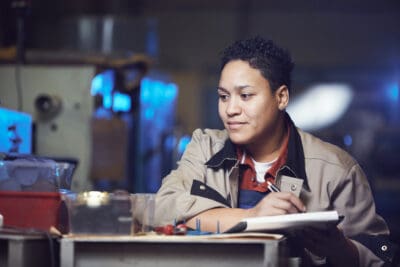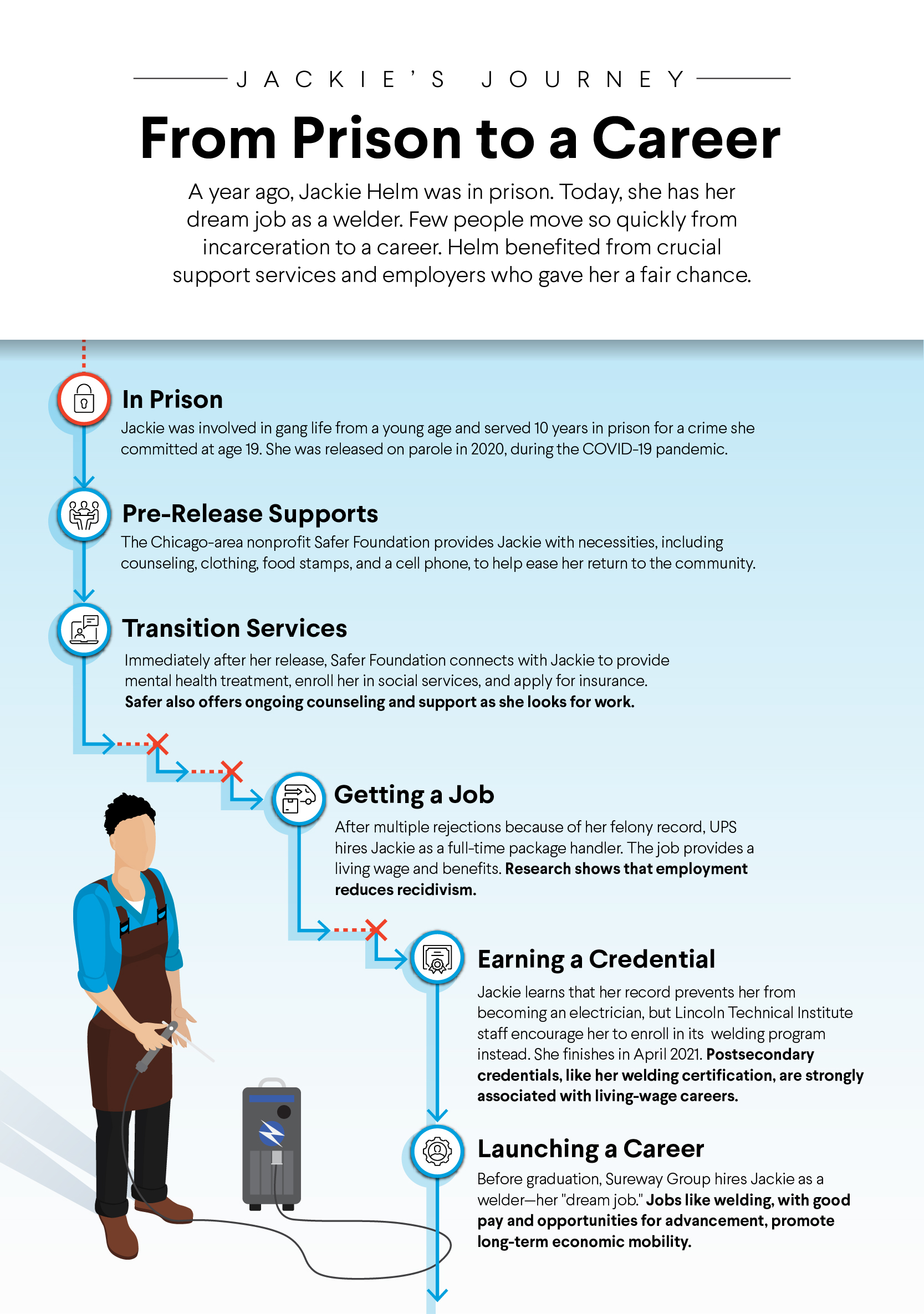When Jackie Helm left prison, she’d missed an entire decade of education, employment, and personal growth. She found few resources in incarceration. “In the inside, they don’t really have anything, especially for women,” she says. And because she was up for parole during the coronavirus pandemic, social supports and work opportunities to smooth her return to the community were scarcer than ever.
A year later, Helm is employed, in school, and learning welding—an in-demand trade that’s not common among women, but has become her dream job. After earning her American Welding Society certification in April, she’ll work full time at a Chicago-area metal fabricator, the Sureway Group.
Helm’s path may sound like a simple success story. But she’ll be the first to tell you she didn’t reach this point easily, she didn’t do it alone, and she believes other people exiting prison deserve the resources and opportunities to heal and thrive. People who have served time in prison need holistic support—ideally, starting well before their release dates. And more employers need to examine their policies to ensure that people coming out of the prison system get a fair chance.
Research shows stable employment is associated with reduced recidivism. For Helm, finding a good job made the difference between getting out of prison and truly being free.



